6.1: Aquatic Biomes
- Page ID
- 12129
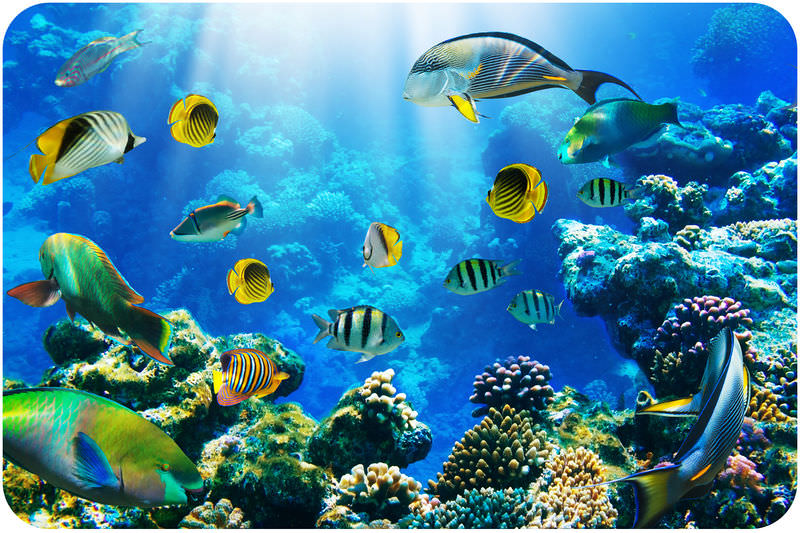
Do aquatic ecosystems need sunlight?
Of course. The sunlight - in part - allows the diversity of life seen in this ecosystem. If the available sunlight was less, could this ecosystem still thrive? Maybe, but the ecosystem would probably be very different. Sunlight, of course, is necessary for photosynthesis, which brings energy into an ecosystem. So, the availability of that sunlight has a direct impact on the productivity and biodiversity of aquatic ecosystems.
Aquatic Biomes
Terrestrial organisms are generally limited by temperature and moisture. Therefore, terrestrial biomes are defined in terms of these abiotic factors. Most aquatic organisms do not have to deal with extremes of temperature or moisture. Instead, their main limiting factors are the availability of sunlight and the concentration of dissolved oxygen and nutrients in the water. These factors vary from place to place in a body of water and are used to define aquatic biomes.
Aquatic Biomes and Sunlight
In large bodies of standing water, including the ocean and lakes, the water can be divided into zones based on the amount of sunlight it receives:
- The photic zone extends to a maximum depth of 200 meters (656 feet) below the surface of the water. This is where enough sunlight penetrates for photosynthesis to occur. Algae and other photosynthetic organisms can make food and support food webs.
- The aphotic zone is water deeper than 200 meters. This is where too little sunlight penetrates for photosynthesis to occur. As a result, food must be made by chemosynthesis or else drift down from the water above.
These and other aquatic zones in the ocean are identified in Figure below.
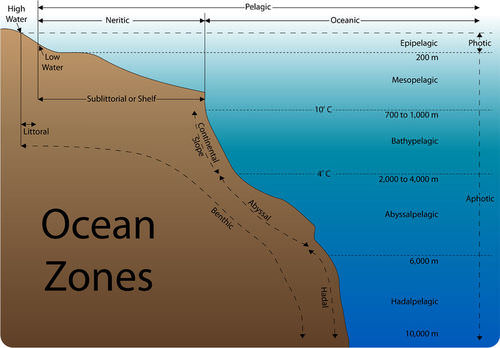 The ocean is divided into many different zones, depending on distance from shore and depth of water.
The ocean is divided into many different zones, depending on distance from shore and depth of water.Aquatic Biomes and Dissolved Substances
Water in lakes and the ocean also varies in the amount of dissolved oxygen and nutrients it contains:
- Water near the surface of lakes and the ocean usually has more dissolved oxygen than does deeper water. This is because surface water absorbs oxygen from the air above it.
- Water near shore generally has more dissolved nutrients than water farther from shore. This is because most nutrients enter the water from land. They are carried by runoff, streams, and rivers that empty into a body of water.
- Water near the bottom of lakes and the ocean may contain more nutrients than water closer to the surface. When aquatic organisms die, they sink to the bottom. Decomposers near the bottom of the water break down the dead organisms and release their nutrients back into the water.
Marine Biomes
Anglerfish live in the ocean. Aquatic biomes in the ocean are called marine biomes. Organisms that live in marine biomes must be adapted to the salt in the water. For example, many have organs for excreting excess salt. Two ocean zones are particularly challenging to marine organisms: the intertidal zone and the deep ocean.
The intertidal zone is the narrow strip along the coastline that is covered by water at high tide and exposed to air at low tide (see Figure below). There are plenty of nutrients and sunlight in the intertidal zone. However, the water is constantly moving in and out, and the temperature keeps changing. These conditions require adaptations in the organisms that live there, such as the barnacles in Figure below.
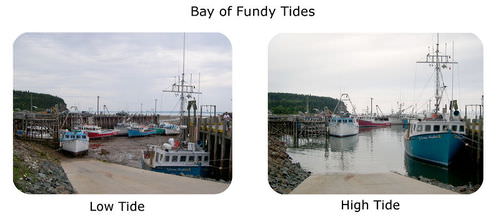 These pictures show the intertidal zone of the Bay of Fundy, on the Atlantic coast in Maine. Can you identify the intertidal zone from the pictures?
These pictures show the intertidal zone of the Bay of Fundy, on the Atlantic coast in Maine. Can you identify the intertidal zone from the pictures?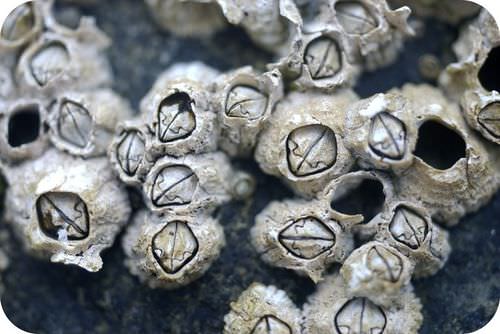 Barnacles secrete a cement-like substance that anchors them to rocks in the intertidal zone.
Barnacles secrete a cement-like substance that anchors them to rocks in the intertidal zone.Organisms that live deep in the ocean must be able to withstand extreme water pressure, very cold water, and complete darkness. However, even here, thriving communities of living things can be found. Organisms cluster around hydrothermal vents in the ocean floor. The vents release hot water containing chemicals that would be toxic to most other living things. The producers among them are single-celled chemoautotrophs. They make food using energy stored in the chemicals.
Monitoring Marine Protected Areas
Is overfishing an important issue? What would happen if fish populations dwindled? Marine Protected Areas are no-fishing zones that have recently been established up and down the California coast, in the hope of allowing fish to breed, grow large, and replenish state waters. Scientists monitor these areas to determine if this process is working.
Further Reading
Summary
Review
- How are aquatic biomes defined?
- What is the photic zone of the ocean?
- Where does food come from in the aphotic zone?
| Image | Reference | Attributions |
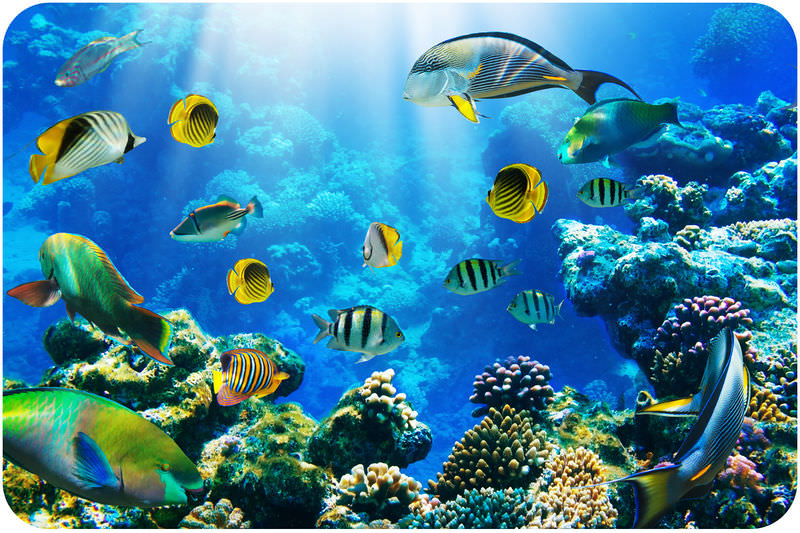 |
[Figure 1] | Credit: Jodi So Source: CK-12 Foundation License: CC BY-NC 3.0 |
 |
[Figure 2] | Credit: Jodi So Source: CK-12 Foundation License: CC BY-NC 3.0 |
 |
[Figure 3] | Credit: Dylan Kereluk Source: Left: commons.wikimedia.org/wiki/File:Bay_of_Fundy_-_Tide_Out.jpg ; Right: commons.wikimedia.org/wiki/File:Bay_of_Fundy_-_Tide_In.jpg License: CC BY 2.0 |
 |
[Figure 4] | Credit: Mo Riza;Dylan Kereluk Source: http://www.flickr.com/photos/modomatic/2394983702/ ; By NOAA (From here) [Public domain] ; via Wikimedia Commons License: CC BY 2.0 |

